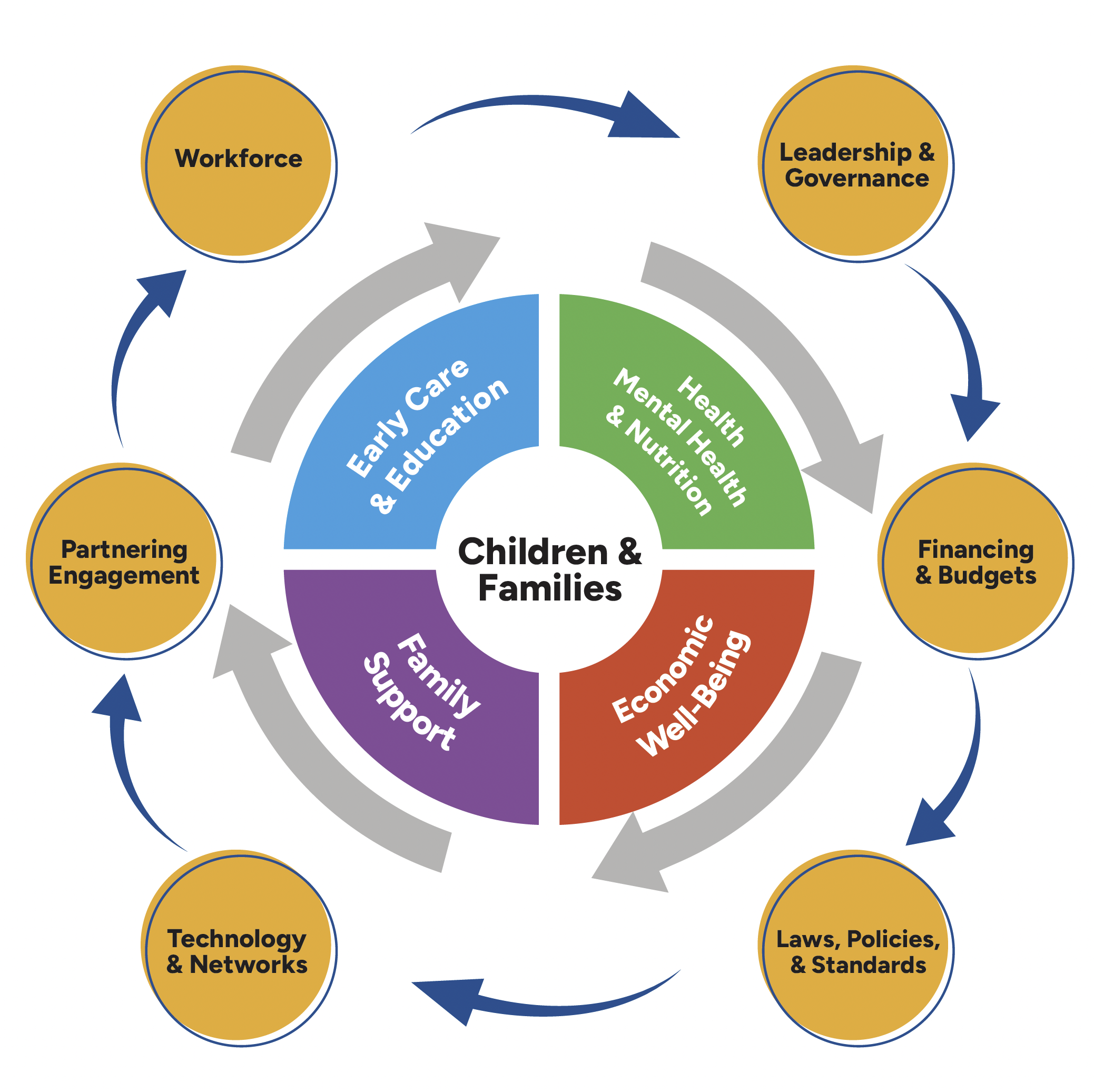Nevada's Early Childhood System

Nevada's Early Childhood System includes all the programs and services that young kids and their families need to be healthy and grow to their fullest potential.

Nevada's Early Childhood System includes all the programs and services that young kids and their families need to be healthy and grow to their fullest potential.
What is an Early Childhood System?
An “early childhood system” is comprised of all of the programs, services and supports that young children and their families need to enhance optimal health and development. The system includes both direct services, as well as governance and support structures that enable programs and services to be delivered effectively.
A “comprehensive early childhood system” is a well-organized network of programs, services, and resources designed to support children prenatally through their early years. This system is designed to provide a holistic approach to child development and early education, addressing the various needs and stages of a child's growth. To learn more about the Early Childhood System and its program elements, often referred to as “early childhood sectors,” click here.
Why Early Childhood Matters
Years of research on early childhood development confirms that providing quality early care and education from the prenatal period through age eight is essential for the healthy development of our children and families. It is also important to the economic vitality of our communities, our state, and our nation. However, in communities across Nevada, many families lack awareness of and access to quality early childhood services that will support their needs.
The science is clear. Children’s brains develop at their fastest pace during the early years when brain connections form at a rate of 1 million new neural connections per second. This intense period of learning and development means that the youngest brains are highly flexible and responsive to the environment as their foundational architecture is established. Ongoing advances in neuroscientific research reinforce what we now know – the early years are the most effective time to influence brain development and put children on a path to healthy development and lifelong well-being and achievement.
Adapted from the Nevada Early Childhood Advisory Council’s 2022-2024 Strategic Plan

The Early Childhood Comprehensive Systems (ECCS) project aims to build integrated maternal and early childhood systems of care that are equitable, sustainable, and inclusive of the health system. It promotes early developmental health and family well-being and increases family-centered access to care and engagement of the prenatal-to-three-year-old population.
The BUILD Initiative partners with state leaders to promote equitable, high-quality child- and family-serving systems that result in young children thriving and learning.
The Self-Sufficiency Standard defines the amount of income necessary to meet the basic needs of working-age families in Nevada without public or private assistance.
The purpose of the PDG B-5 Grant is to strengthen Nevada's Early Childhood Comprehensive System through collaborative partnership with stakeholders and families.
This brief is part of series from Harvard University’s Center on the Developing Child which addresses the importance of early childhood development and the science that explains why this period of development is critical.
The state fiscal map provides data about how Nevada funds are targeted to specific outcomes, services, age groups, and populations and can inform decision making and future strategic public financing.